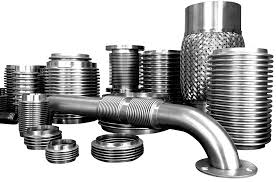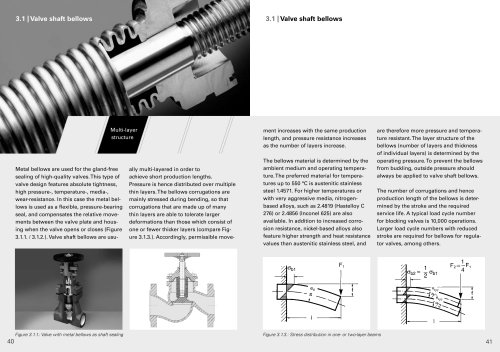

Home About us Product Contact us



Hydroforming: To begin, hydroforming is one such method. The hydroforming starts with the creation of a mold in the desired bellows shape. Once set, the mold goes into a chamber that engineers can seal. Then they place a sheet of metal into the chamber, close off each end, and fill the remaining space with water. As water enters, the pressure rises and pushes the metal sheet against the mold until it mirrors this shape. This method is generally effective at producing irregular forms and is effective in bellows production. Plus, it’s simple to enact this process with the same mold over and over again.
Punch Forming: Another manufacturing method of metal bellows is punch forming. This alternative involves utilizing an expanding mandrel-forming machine to punch out convolutions from the inside of a cylindrical metal tube.
Roll Forming: Coming at it from a different angle, roll forming employs a machine that rolls each convolution to a preset diameter from the outside. This is a common method that excels when you need small, custom designs.
Cold Forming: Last on our list is cold forming. Cold forming is a room-temperature process throughout which bellows change in quality, becoming tougher and harder. It occurs in several stages and involves no cutting or welding. Rather, machines press bellows into various dies until they reach a completed stage. All of these manufacturing methods have their specific pros and cons, depending on the client’s industry. For answers to your questions about bellows or expansion joints as a whole, contact Triad Bellows. You can also get in touch for information on our stainless steel bellows or other products and services.
From a metal-strip to a seamless metal bellow
Metal bellows made by Mera Bellows are manufactured by a multistage plastic deformation process, starting with a metal strip. We receive high precision, thin-walled tubes as an intermediate product and at the request of our customers, we have included them in our product range.

Manufacturing Tubes: A multi-stage press cuts round plates out of a metal strip and forms them into small cups. These are cleaned and degreased using eco-friendly paraffin and later vacuum annealed. Following this, the cups are deep-drawn in several steps into thin-walled tubes. Concluding the processes, the tubes are once again cleaned and annealed using vacuum or inert-gas. This is the technique that Mera Bellows uses to manufacture high-precision tubes with closed ends. If requested, the ends can be cut in order to supply open tube constructions.
Producing Bellows: The hydroforming of a bellow is done inside of a purpose-built, very complex tool. To form the convolutions, water is pressed inside the tubes with a pressure of up to 250 bar. At the same time the tool is compressed. After hydroforming, the neck of the bellow is cut to the correct length, the shape of the bottom is formed, and the bellow gets its final length. Afterwards the metal bellows are cleaned once again and then stress-relieved under an inert-gas protection.

Bellows Design & Manufacturing Process
1. Metal bellows manufacturing starts with the customer’s selection of ASTM or ASME material based on system design. Bellows ply thickness, number of convolutions, and convolution height and pitch are determined by Badger. Typical ply thickness for metal bellows ranges from .010” to .078”. Minimum thickness is .005” and maximum thickness is .125”, depending on the forming method used.
2. The bellows material is sheared to close tolerance dimensions depending on diameter and final convoluted length.
3. The material is then rolled into a tube, welded, and planished (shown on the left in the above image).
4. The tubes are then processed on a bellows forming machine to Badger design requirements (shown on the right in the above image).